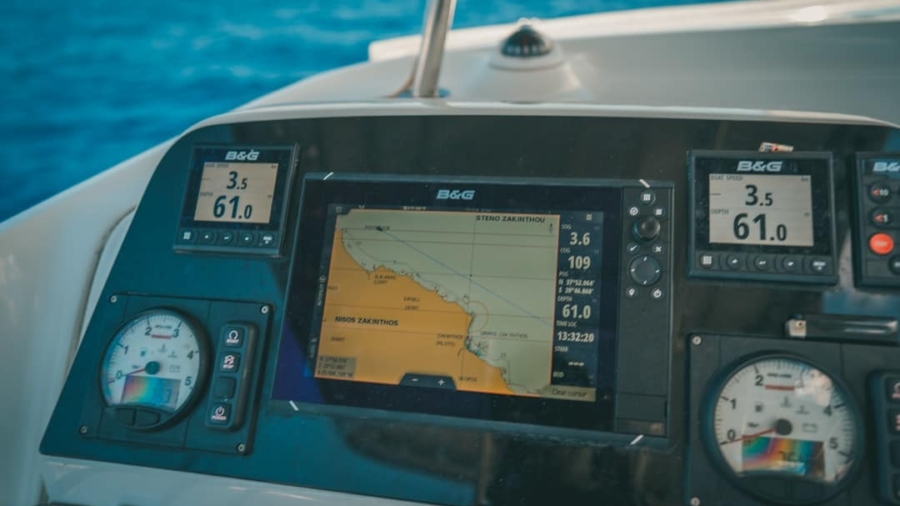Augmented Reality (AR) navigation has emerged as a transformative force in the tourism industry, reshaping how travelers explore new destinations. The integration of digital information with the physical world has gained traction, particularly with the proliferation of smartphones and wearable technology. As tourists increasingly seek immersive experiences, AR navigation offers a unique blend of real-time information and interactive elements that enhance the exploration of cities, landmarks, and cultural sites.
This technology allows users to overlay digital content onto their surroundings, providing context and depth to their experiences. The rise of AR navigation can be attributed to several factors, including advancements in mobile technology, the growing popularity of location-based services, and the demand for personalized travel experiences. Companies like Google and Apple have invested heavily in AR capabilities, making it easier for developers to create applications that cater to the needs of tourists.
For instance, apps like Google Lens allow users to point their cameras at a landmark and receive instant information about its history, significance, and nearby attractions. This seamless integration of AR into everyday travel has made it an indispensable tool for modern explorers.
Key Takeaways
- AR navigation is becoming increasingly popular in tourism, offering a new way for tourists to explore destinations.
- AR navigation enhances the tourist experience by providing interactive and immersive information about attractions and landmarks.
- AR navigation has a significant impact on cultural and historical sites, offering visitors a deeper understanding and appreciation of the heritage and significance of these locations.
- AR navigation promotes sustainable tourism by reducing the need for physical signage and paper maps, minimizing environmental impact.
- Overcoming language barriers is made easier with AR navigation, as it can provide real-time translations and information in multiple languages for tourists.
How AR Navigation Enhances the Tourist Experience
AR navigation significantly enriches the tourist experience by providing real-time information that is both engaging and informative. When travelers use AR applications, they can access a wealth of data about their surroundings, including historical facts, user-generated reviews, and multimedia content such as videos and images. This immediate access to information allows tourists to make informed decisions about where to go and what to see, enhancing their overall experience.
For example, while visiting a famous museum, an AR app can guide users through exhibits, offering detailed descriptions and interactive elements that bring art and history to life. Moreover, AR navigation fosters a sense of connection between tourists and their destinations. By overlaying digital content onto physical locations, travelers can engage with their environment in a more meaningful way.
For instance, an AR app might allow users to visualize how a historical site looked in its prime or provide insights into local customs and traditions. This interactive storytelling not only captivates tourists but also deepens their understanding of the cultural significance of the places they visit. As a result, AR navigation transforms passive sightseeing into an active learning experience.
The Impact of AR Navigation on Cultural and Historical Sites

Cultural and historical sites stand to benefit immensely from the implementation of AR navigation technologies. These locations often face challenges related to visitor engagement and education, as traditional methods may not adequately convey the richness of their histories. By incorporating AR features, these sites can offer visitors an enriched understanding of their significance.
For example, at archaeological sites like Pompeii, AR applications can recreate ancient structures and daily life scenes, allowing visitors to visualize the past in a way that static displays cannot achieve. Furthermore, AR navigation can help preserve cultural heritage by providing context that encourages responsible tourism. When tourists understand the historical importance of a site, they are more likely to respect its integrity and contribute positively to its preservation.
For instance, an AR app could highlight areas that are particularly fragile or in need of protection, guiding visitors away from sensitive zones while educating them about the reasons behind these restrictions. This approach not only enhances the visitor experience but also fosters a sense of stewardship among tourists.
AR Navigation and Sustainable Tourism
Sustainable tourism is increasingly becoming a priority for travelers who are conscious of their environmental impact. AR navigation plays a pivotal role in promoting sustainable practices by encouraging responsible exploration and minimizing the carbon footprint associated with travel. By providing real-time information about public transportation options, walking routes, and eco-friendly attractions, AR applications empower tourists to make choices that align with sustainable principles.
For instance, an app might suggest bike rentals or walking tours instead of driving, thereby reducing emissions and promoting healthier lifestyles. Additionally, AR navigation can help manage visitor flow at popular destinations, alleviating overcrowding and its associated environmental impacts. By analyzing data on foot traffic patterns, tourism boards can use AR technology to direct visitors toward less-traveled areas or suggest alternative routes during peak times.
This not only enhances the experience for tourists but also helps preserve the integrity of popular sites by distributing visitor numbers more evenly throughout a region. In this way, AR navigation serves as a tool for balancing tourism growth with environmental sustainability.
Overcoming Language Barriers with AR Navigation
Language barriers have long posed challenges for international travelers seeking to navigate unfamiliar environments. AR navigation offers innovative solutions to this issue by providing real-time translation services that enhance communication and understanding. Many AR applications now include features that allow users to point their devices at signs or menus and receive instant translations in their preferred language.
This capability not only facilitates smoother interactions but also enriches the travel experience by enabling tourists to engage more deeply with local culture. Moreover, AR navigation can incorporate audio guides in multiple languages, allowing users to select their preferred language while exploring a site. This feature ensures that all visitors can access valuable information without feeling alienated due to language differences.
For example, at historical landmarks or museums, audio guides can narrate stories and facts in various languages while synchronizing with visual elements displayed through AR technology. This inclusive approach fosters a sense of belonging among diverse groups of travelers and enhances their overall enjoyment.
The Future of AR Navigation in Tourism

The future of AR navigation in tourism is poised for significant growth as technology continues to evolve. With advancements in artificial intelligence (AI) and machine learning, AR applications will become increasingly sophisticated in understanding user preferences and behaviors. This personalization will allow for tailored recommendations based on individual interests, enhancing the overall travel experience.
For instance, an app could analyze a user’s past travel history and suggest attractions or activities that align with their preferences, creating a more customized journey. Additionally, as 5G technology becomes more widespread, the capabilities of AR navigation will expand dramatically. The increased bandwidth will enable real-time data processing and seamless integration of complex digital content into physical environments.
This means that tourists could experience richer interactions with their surroundings—such as live updates on events happening nearby or interactive experiences that respond dynamically to user input. The potential for gamification within tourism is also significant; travelers could engage in scavenger hunts or challenges that encourage exploration while providing educational content through AR.
Challenges and Limitations of AR Navigation in Tourism
Despite its many advantages, AR navigation in tourism is not without challenges and limitations. One significant hurdle is the reliance on technology; not all travelers are tech-savvy or have access to smartphones capable of running advanced AR applications. Additionally, connectivity issues can hinder the effectiveness of these tools in remote areas or regions with limited internet access.
As a result, some tourists may miss out on the benefits of AR navigation simply due to technological constraints. Another challenge lies in the accuracy and reliability of the information provided through AR applications. Misinformation or outdated content can lead to confusion or frustration among users.
It is crucial for developers and tourism boards to ensure that the data integrated into these applications is regularly updated and verified for accuracy. Furthermore, there is a risk that over-reliance on AR navigation could detract from genuine human interactions and spontaneous discoveries that often characterize travel experiences.
Tips for Using AR Navigation Effectively on Your Next Trip
To maximize the benefits of AR navigation during your travels, consider several practical tips that can enhance your experience. First, familiarize yourself with available AR applications before your trip; research which ones are best suited for your destination and download them in advance. Many apps offer offline capabilities or downloadable content that can be accessed without an internet connection—this is particularly useful when traveling to areas with limited connectivity.
Second, take advantage of user reviews and community-generated content within these applications. Many AR navigation tools incorporate feedback from other travelers, providing insights into popular attractions or hidden gems that may not be widely known. Engaging with this community aspect can lead to more enriching experiences as you discover unique aspects of your destination.
Lastly, balance your use of technology with genuine exploration. While AR navigation can provide valuable information and enhance your understanding of a location, it is essential to remain open to spontaneous experiences that arise during your travels. Allow yourself time to wander without relying solely on your device; some of the most memorable moments often occur when you least expect them.
By integrating AR navigation thoughtfully into your travel routine, you can create a richer and more fulfilling journey.
In the rapidly evolving landscape of tourism, augmented reality (AR) navigation is emerging as a game-changer, offering travelers immersive experiences that transform how they explore new destinations. A related article that delves into the technological advancements shaping various industries is How Smartwatches Are Revolutionizing the Workplace. This article explores how wearable technology is not only enhancing productivity in professional settings but also influencing other sectors, including tourism, by providing real-time data and interactive experiences. As AR navigation continues to gain traction, the integration of such technologies promises to redefine the future of travel, making it more interactive and personalized.
FAQs
What is AR navigation?
AR navigation, or augmented reality navigation, is a technology that overlays digital information onto the real world through a device such as a smartphone or AR glasses. This allows users to see digital directions, points of interest, and other helpful information as they navigate through the physical world.
How is AR navigation changing tourism?
AR navigation is changing tourism by providing visitors with an enhanced and interactive way to explore new destinations. It offers real-time information about landmarks, historical sites, and attractions, as well as personalized recommendations and directions, creating a more immersive and engaging travel experience.
What are the benefits of AR navigation for tourists?
Some benefits of AR navigation for tourists include improved wayfinding, access to detailed information about points of interest, interactive experiences, and the ability to customize their travel experience based on their interests and preferences.
What are some examples of AR navigation in tourism?
Examples of AR navigation in tourism include AR-powered city guides that provide historical information and directions, AR-enhanced museum experiences that offer interactive exhibits and virtual tours, and AR-enabled travel apps that overlay information about nearby attractions and dining options onto the user’s surroundings.
What are the potential challenges of implementing AR navigation in tourism?
Challenges of implementing AR navigation in tourism may include the need for reliable network connectivity, ensuring the accuracy and relevance of the information provided, and addressing privacy concerns related to the collection and use of location data. Additionally, there may be barriers to adoption for some users who are unfamiliar with AR technology.

